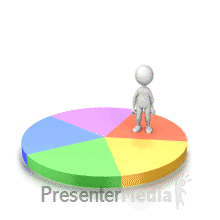•The
line chart is one of the most frequently used chart types, typically used to
show trends over a period of time.
• If
you need to chart changes over time, consider using a line chart.
•A pie
chart represents the distribution or proportion of each data item over a total
value (represented by the overall pie).
•A pie
chart is most effective when plotting no more than three categories of data.
•Scatter
charts in Excel (also known as XY scatter plot charts) are excellent for
showing correlations between two sets of values. For example an XY scatter plot
can be used to illustrate the correlation between employee performance and
competency, demonstrating that employee performance rises as competency
improves.
The x
and y axes work together to represent data plots on the chart based on the
intersection of x values and y values.



















